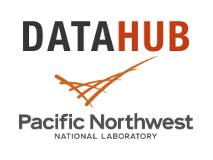Journal Article
Atmospheric Chemistry and Physics, vol. 20, iss. 14, pp. 8855-8865, 2020
Authors
Gunnar Myhre, Bjørn H. Samset, Christian W. Mohr, Kari Alterskjær, Yves Balkanski, Nicolas Bellouin, Mian Chin, James Haywood, Øivind Hodnebrog, Stefan Kinne, Guangxing Lin, Marianne T. Lund, Joyce E. Penner, Michael Schulz, Nick Schutgens, Ragnhild B. Skeie, Philip Stier, Toshihiko Takemura, Kai Zhang
Abstract
Abstract. The radiative forcing of the aerosol–radiation interaction can be
decomposed into clear-sky and cloudy-sky portions. Two sets of multi-model
simulations within Aerosol Comparisons between Observations and Models (AeroCom), combined with observational methods, and the
time evolution of aerosol emissions over the industrial era show that the
contribution from cloudy-sky regions is likely weak. A mean of the
simulations considered is 0.01±0.1 W m−2. Multivariate data
analysis of results from AeroCom Phase II shows that many factors influence
the strength of the cloudy-sky contribution to the forcing of the
aerosol–radiation interaction. Overall, single-scattering albedo of
anthropogenic aerosols and the interaction of aerosols with the short-wave
cloud radiative effects are found to be important factors. A more dedicated
focus on the contribution from the cloud-free and cloud-covered sky fraction,
respectively, to the aerosol–radiation interaction will benefit the
quantification of the radiative forcing and its uncertainty range.
